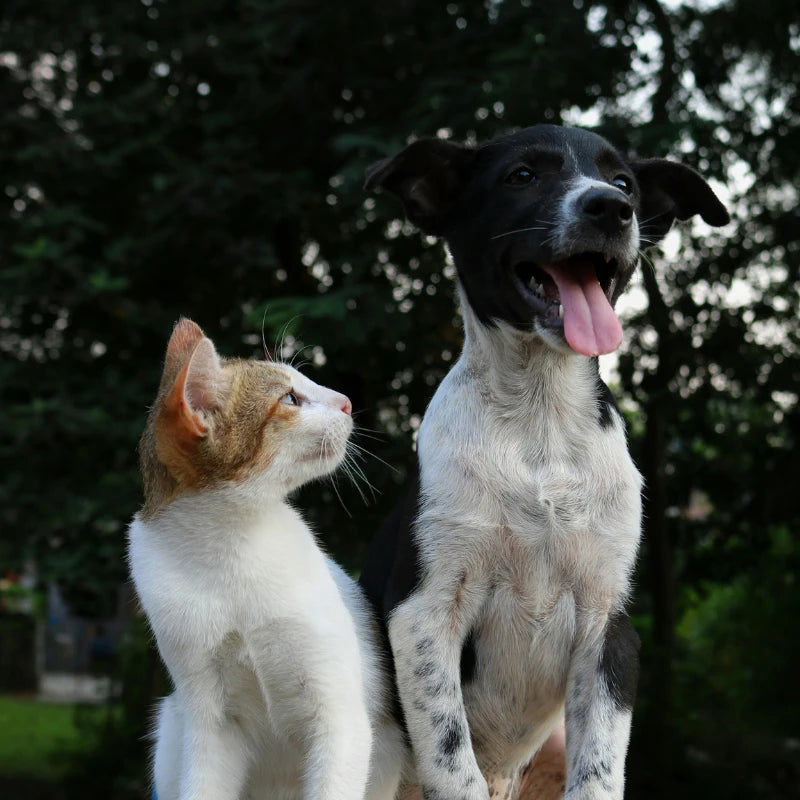How to Take Care of a Cat in Winter: Keep Your Cat Warm, Safe & Happy
 When temperatures drop, even the fluffiest cats can feel the chill.
When temperatures drop, even the fluffiest cats can feel the chill.
Whether your feline is a lazy indoor lounger or a curious explorer, winter changes their comfort zone—and it’s up to you to help them adjust.
This guide walks you through everything you need to know about how to take care of a cat in winter
Do Cats Get Cold
Yes. Cats can absolutely get cold, especially:
-
Short-haired or hairless breeds (like Devon Rex or Sphynx)
-
Senior cats or kittens with weaker immune systems
-
Cats with low body fat or certain health conditions
If your cat is curled up tight, hiding under blankets, or seeking your laptop or radiator for warmth—it’s their way of saying, “It’s cold in here.”
Quick rule: If you need a sweater, your cat probably needs a warmer spot too.
How to Care for Indoor Cats in Winter
Indoor cats are shielded from freezing air—but that doesn’t mean they’re comfortable.
Dry heating, cold floors, and lack of sunlight can all affect their well-being.
1. Create a Cozy, Draft-Free Sleeping Spot
Place a cat bed or thick blanket in a quiet area away from doors or windows.
Cats love warmth that feels enclosed, so consider a hooded bed or box-style shelter.
Pro Tip: Elevate the bed slightly—heat rises, and sleeping off the floor makes a big difference.
2. Use Heated or Self-Warming Cat Beds
Heated beds are a game changer for older cats or those with arthritis.
Choose pet-safe, low-voltage options that automatically shut off when not in use.
If you prefer a non-electric version, self-warming mats that reflect body heat are a safe, low-cost alternative.
3. Keep Them Active Indoors
Cats move less during winter, which can lead to weight gain or boredom.
Encourage daily playtime with wand toys, tunnels, or interactive feeders.
Delomo Tip: Daily brushing not only keeps their coat clean—it stimulates circulation and keeps them warm naturally.
4. Maintain a Moisturizing Grooming Routine
Indoor heating can dry out a cat’s skin and coat.
Brush regularly to distribute natural oils and prevent matting.
If you use grooming tools, make sure they’re gentle—like the Delomo Pet Grooming Gloves that keeps fur off furniture while maintaining coat health.
5. Watch Out for Hidden Hazards
Space heaters, fireplaces, and electric blankets are all cat magnets.
Keep cords hidden and never leave heat sources unattended.
Cats will always find the warmest (and sometimes riskiest) spot in the house.
How to Take Care of Outdoor or Feral Cats in Winter
If your cat loves the outdoors—or you care for community cats—cold weather care becomes even more important.
1. Build or Provide an Insulated Shelter
An ideal outdoor cat shelter should be:
-
Small and enclosed: Retains body heat
-
Elevated off the ground: Prevents dampness
-
Lined with straw, not blankets: Straw repels moisture and stays warm even when wet
You can DIY one using a storage bin or purchase insulated shelters online.
Always face the entrance away from the wind.
2. Offer Warm Food and Fresh Water
- Outdoor cats burn more calories in winter, so increase food portions slightly.
- Serve wet food warm (a few seconds in the microwave is enough).
Water freezes quickly—use a heated bowl or check several times a day to keep it drinkable.
3. Protect Their Paws
- Snow, salt, and de-icers can irritate or crack paw pads.
- Wipe their paws after outdoor time and use a cat-safe paw balm for protection.
If they resist, make it part of a cuddle routine—gentle and positive.
4. Keep Them Safe at Night
With longer nights, outdoor risks increase.
Add reflective collars, and make sure your cat’s microchip info is up-to-date in case they wander.
Winter Nutrition Tips
Your cat’s winter diet should help them stay energized and hydrated.
|
Tip |
Why It Matters |
|
Add a bit more food for active or outdoor cats |
They burn more calories to stay warm |
|
Mix wet and dry food |
Wet food keeps hydration levels up |
|
Serve warm meals |
Enhances appetite and comfort |
|
Consider omega-3 supplements |
Supports skin and coat health during dry months |
Always consult your vet before making big diet changes—especially for senior or medical-condition cats.
Cold Weather Safety Tips Every Cat Owner Should Know
1. Check Before Starting Your Car
- Outdoor cats may crawl under the hood to stay warm.
- Tap the hood or honk before starting your engine—it could save a life.
2. Be Extremely Careful with Antifreeze
- Antifreeze smells sweet but is deadly even in small amounts.
- Clean up spills immediately and keep all containers sealed.
- If you suspect ingestion, go to the vet immediately.
- Signs include drooling, vomiting, or stumbling.
3. Maintain Indoor Humidity
- Dry winter air can irritate cats’ skin and sinuses.
- A small humidifier near their resting spot can make a big difference.
4. Keep the Litter Box Accessible
- Cats may avoid using the litter box if it’s placed in a cold or drafty area.
- Move it somewhere warmer to prevent accidents.
Keep the Bond Warm Too
Winter can make cats sleepier, quieter, or clingier—that’s normal. Shorter daylight hours affect their mood just like ours.
Spend more time together, talk to them, brush them gently. These small rituals strengthen trust and make your home feel even cozier.
FAQs
1. Do cats get cold indoors?
Yes. Even indoor cats can feel chilly, especially if they sleep on the floor or near windows. Keep their bed elevated and away from drafts.
2. How cold is too cold for cats?
Below 45°F (7°C) is considered unsafe for most cats—especially kittens or seniors.
3. Can cats wear sweaters?
Some cats tolerate it, but most don’t. Always choose breathable, loose-fitting fabric and observe for stress signals.





Leave a comment